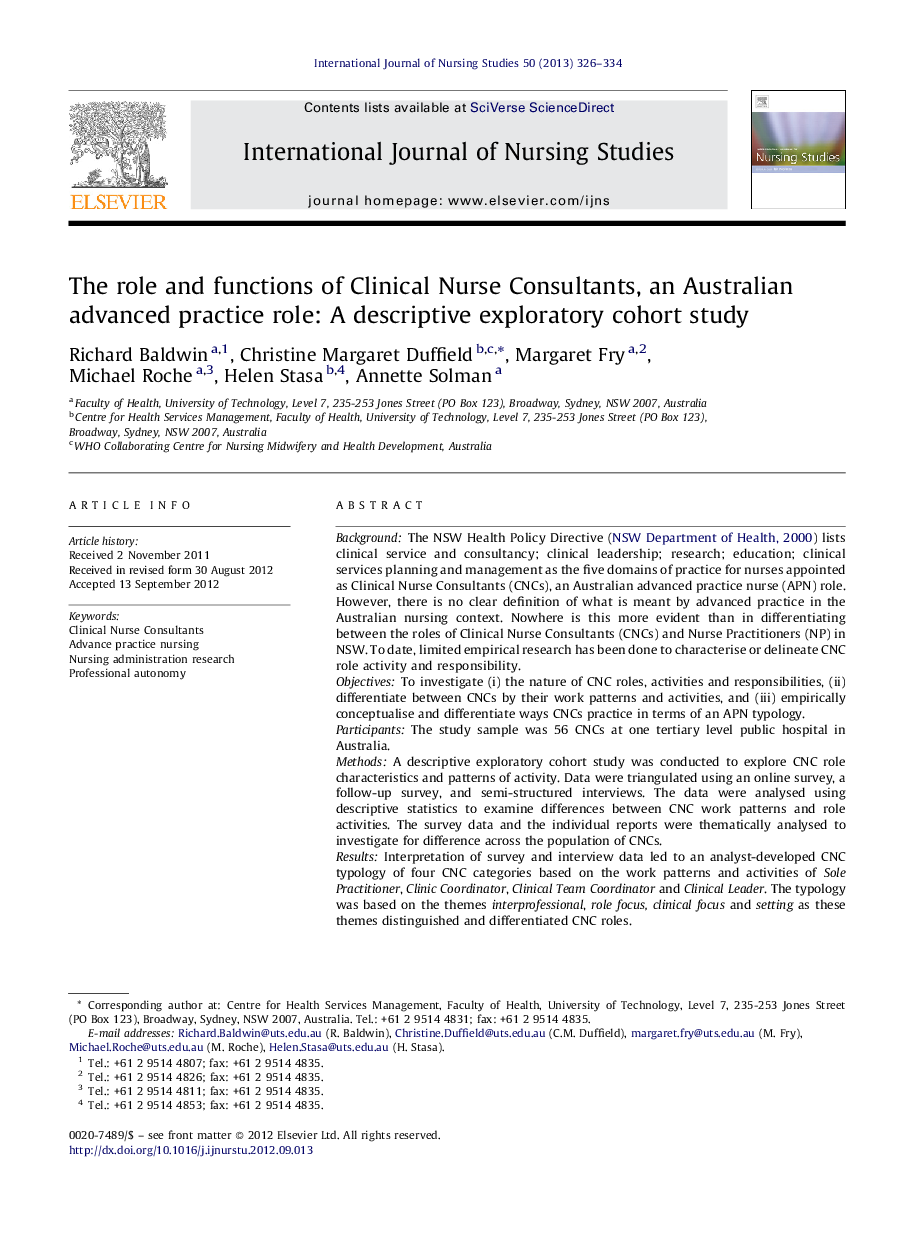| Article ID | Journal | Published Year | Pages | File Type |
|---|---|---|---|---|
| 1076365 | International Journal of Nursing Studies | 2013 | 9 Pages |
BackgroundThe NSW Health Policy Directive (NSW Department of Health, 2000) lists clinical service and consultancy; clinical leadership; research; education; clinical services planning and management as the five domains of practice for nurses appointed as Clinical Nurse Consultants (CNCs), an Australian advanced practice nurse (APN) role. However, there is no clear definition of what is meant by advanced practice in the Australian nursing context. Nowhere is this more evident than in differentiating between the roles of Clinical Nurse Consultants (CNCs) and Nurse Practitioners (NP) in NSW. To date, limited empirical research has been done to characterise or delineate CNC role activity and responsibility.ObjectivesTo investigate (i) the nature of CNC roles, activities and responsibilities, (ii) differentiate between CNCs by their work patterns and activities, and (iii) empirically conceptualise and differentiate ways CNCs practice in terms of an APN typology.ParticipantsThe study sample was 56 CNCs at one tertiary level public hospital in Australia.MethodsA descriptive exploratory cohort study was conducted to explore CNC role characteristics and patterns of activity. Data were triangulated using an online survey, a follow-up survey, and semi-structured interviews. The data were analysed using descriptive statistics to examine differences between CNC work patterns and role activities. The survey data and the individual reports were thematically analysed to investigate for difference across the population of CNCs.ResultsInterpretation of survey and interview data led to an analyst-developed CNC typology of four CNC categories based on the work patterns and activities of Sole Practitioner, Clinic Coordinator, Clinical Team Coordinator and Clinical Leader. The typology was based on the themes interprofessional, role focus, clinical focus and setting as these themes distinguished and differentiated CNC roles.ConclusionsThe study provides evidence of great diversity and prioritisation within CNC roles. The CNC typology identified in this study is similar to the categorisation of the roles of APNs reported by other researchers. With further testing, the CNC typology could be useful to service managers and policy makers in making decision on the category of CNC required for a position and may also be able to be applied to other APN roles.
